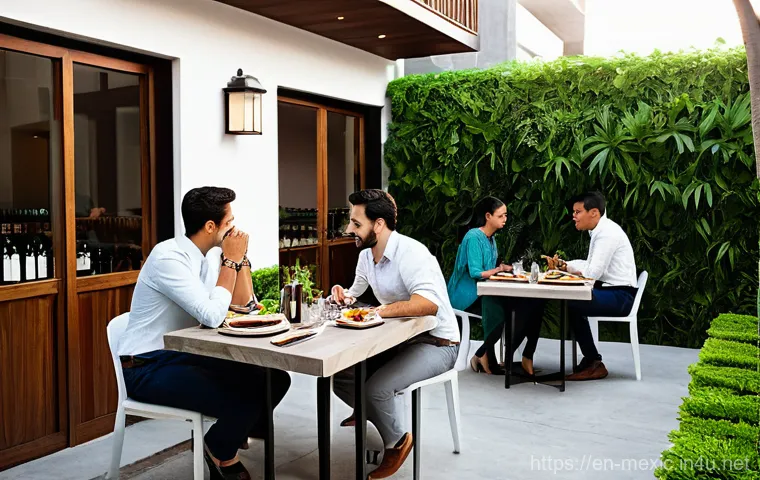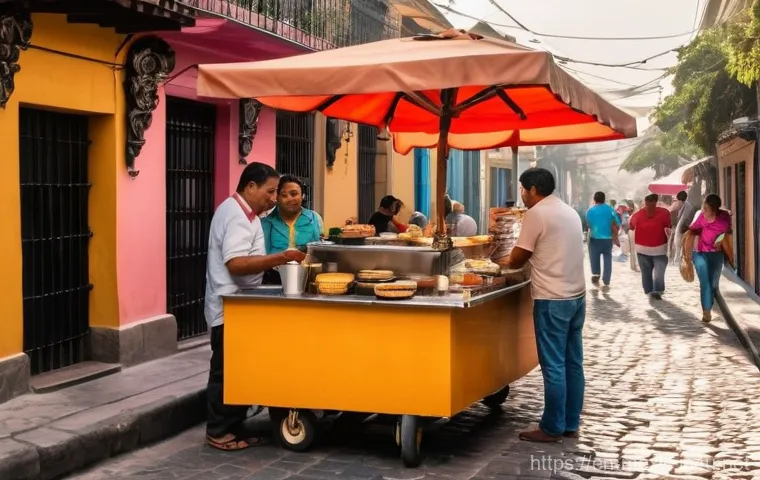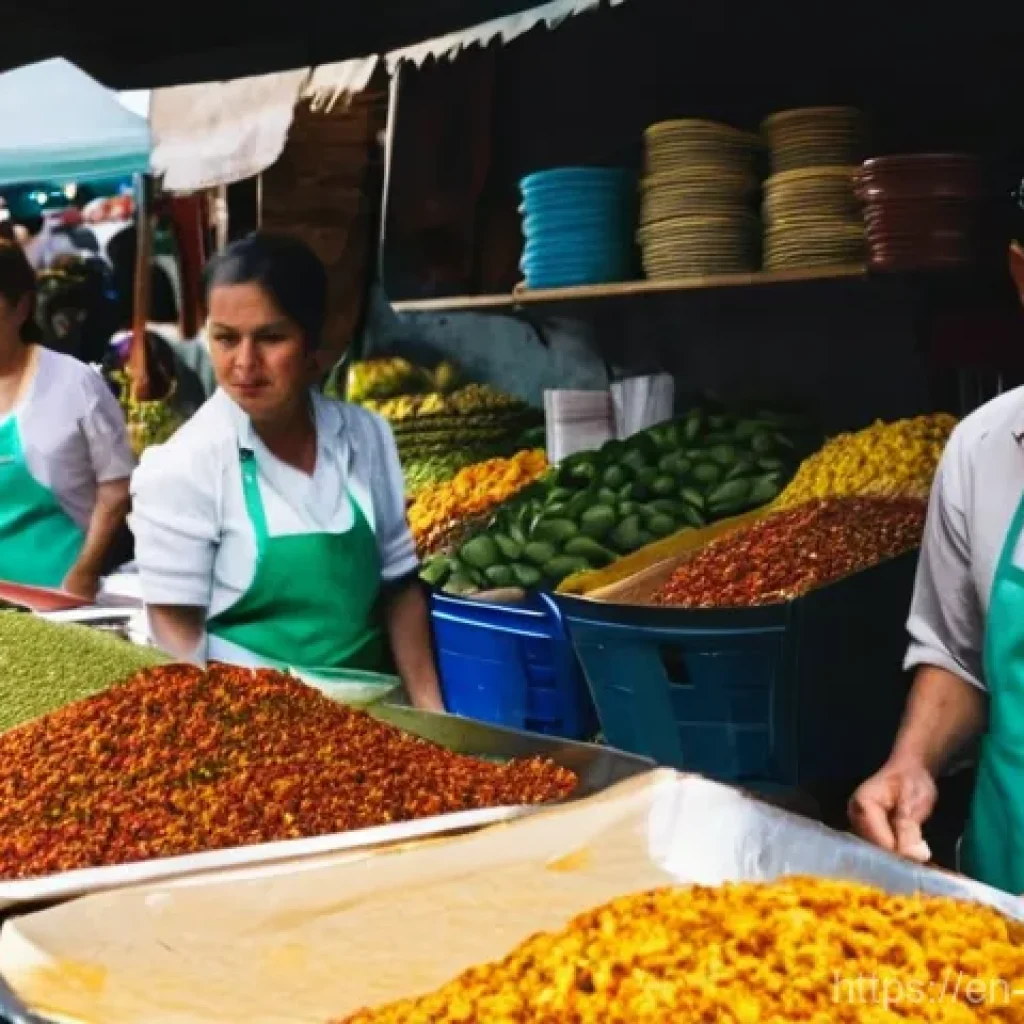Mexico, a country bursting with vibrant culture, incredible food, and breathtaking landscapes, has truly captured the hearts of digital nomads and expats lately.
I’ve personally seen so many friends pack up their lives, eager to experience the allure of living south of the border. But when it comes to settling down, one of the biggest questions I always hear is about the cost of living.
Which city offers the best blend of vibrant lifestyle and budget-friendly expenses? Is Mexico City the urban dream, or perhaps Monterrey with its modern vibe, or maybe Guadalajara, the cultural heartland, holds the key to your ideal Mexican adventure?
Getting the real scoop on what your money can buy in these incredible locations is crucial, especially with costs fluctuating. Let’s get down to the nitty-gritty and find out exactly what to expect.
It’s a real adventure, isn’t it? Packing up your life and heading south of the border to discover what Mexico has in store. I’ve seen so many people, myself included, grapple with the big question: where can you truly live comfortably without breaking the bank?
Mexico City, Monterrey, and Guadalajara are always the top contenders, each with its own unique flavor and, crucially, a different price tag. It’s not just about the numbers, though; it’s about what those numbers *feel* like in your day-to-day.
Let’s peel back the layers and get into the real talk about living costs in these amazing cities.
Mexico City: The Bustling Heart and Its Price Point

Rent Realities: What Your Pesos Get You
When I first considered Mexico City, I pictured sky-high rents, but honestly, it’s a city of contrasts. You’ve got your incredibly chic, trendy neighborhoods like Roma Norte or Condesa, where a decent one-bedroom apartment can easily run you anywhere from $800 to $1,500 USD a month, sometimes even more for something truly luxurious or with all the bells and whistles.
I remember helping a friend scout for places there, and while the apartments were stunning, those areas definitely come with a premium. On the flip side, if you’re willing to venture a bit further out into areas like Narvarte, Portales, or even some parts of Coyoacán (though Coyoacán itself can be pricey too), you can find some fantastic deals.
I’ve seen beautifully furnished one-bedroom spots for as low as $500-$700 USD. It’s all about how much you prioritize being right in the thick of it versus having a bit more space and peace for less.
My personal advice? Don’t be afraid to look just a few metro stops away from the “hot spots”; you might just snag a hidden gem.
Daily Living: Groceries, Transport, and Eating Out
Living in Mexico City, you quickly learn to balance your budget between the convenience of a supermarket and the charm of a local *mercado*. Groceries can be surprisingly affordable, especially if you embrace fresh produce from a *tianguis* (street market).
I love wandering through them, picking up vibrant fruits and vegetables for a fraction of what I’d pay back home. For a single person or a couple, a monthly grocery bill can range from $150 to $300 USD, depending on your diet and if you stick to local brands.
Transportation is where CDMX really shines for budget travelers. The Metro is incredibly efficient and ridiculously cheap—we’re talking literal cents per ride.
I’ve spent no more than $20-$30 USD a month on public transport, even with frequent outings. Eating out? This city is a foodie’s paradise.
You can grab amazing *tacos al pastor* from a street stand for a couple of dollars, or indulge in a fantastic dinner at a mid-range restaurant for $20-$40 USD per person, including drinks.
There’s truly something for every budget, and I’ve found it really easy to save money if I’m strategic about my food choices.
Monterrey: The Industrial Powerhouse with a Modern Vibe
City Living: Accommodation in the North
Monterrey feels different, a bit more like a North American city, especially with its sprawling landscape and modern infrastructure. When it comes to housing, it tends to be a bit pricier than Guadalajara but often comparable to, or slightly less than, the trendiest parts of Mexico City.
I’ve got friends who live there for work, and they often talk about rent for a nice, modern one-bedroom apartment in a good area like San Pedro Garza García (which is technically a separate municipality but part of the larger Monterrey metro area) hovering around $700-$1,200 USD.
If you’re looking at areas closer to the city center or less affluent neighborhoods, you might find something for $450-$650 USD, but it usually means compromising on modernity or amenities.
What I’ve noticed is that while the *initial* rent might be similar to CDMX, utilities in Monterrey, especially air conditioning during the hot summer months, can really add up, so that’s something to factor in.
The Culinary Scene and Getting Around in Monterrey
Monterrey’s food scene has a strong Northern Mexican identity, famous for its *carne asada* and hearty dishes. Eating out can be a bit more expensive than in CDMX or Guadalajara if you’re always heading to sit-down restaurants.
A good meal at a mid-range place might cost $15-$30 USD per person. However, there are still plenty of fantastic local eateries and street food options that keep costs down.
Groceries are quite similar to Mexico City; your bill will depend on your habits, but around $180-$350 USD per month is a fair estimate. Transportation is where Monterrey diverges a bit.
While they have a Metro, it doesn’t cover as much ground as CDMX’s, making cars or ride-sharing apps (like Uber or Didi) much more prevalent. This means you’ll likely spend more on transport unless you live very close to your main activities.
I’d budget at least $50-$100 USD a month just for getting around if you’re not solely relying on public transport.
Guadalajara: The Cultural Heartland’s Welcoming Embrace
Bohemian Rhapsody or Modern Living: Accommodation in Guadalajara
Ah, Guadalajara! There’s a reason so many digital nomads fall head over heels for this city. It strikes a wonderful balance between vibrant culture and a more relaxed pace of life, often with a more digestible price tag.
When I visited, I was pleasantly surprised by the rental market. In popular areas like Chapultepec, Americana, or Providencia, you can find really charming one-bedroom apartments for $450-$800 USD.
If you’re willing to live in slightly less central but still very pleasant neighborhoods, you could even find something for $350-$450 USD. It feels like you get a lot more bang for your buck here compared to Mexico City or Monterrey.
The architecture is beautiful, the streets are walkable, and there’s a real sense of community that makes it feel like home very quickly. I’ve often heard expats say that their quality of life, dollar for dollar, is highest in Guadalajara.
The Local Flavor: Food Markets and Dining Experiences
Guadalajara’s food scene is pure joy. It’s rich in Jalisco traditions, from *birria* to *torta ahogada*, and it’s incredibly affordable to eat well. Like CDMX, the local markets are your best friend for fresh, inexpensive produce.
My grocery budget here would probably be the lowest of the three cities, easily staying within $120-$250 USD per month if I cooked most of my meals. Eating out is equally delightful.
You can enjoy a fantastic meal at a local *fonda* for less than $5 USD, and even a lovely dinner at a mid-range restaurant won’t usually exceed $15-$25 USD per person.
The city has a buzzing nightlife and cafe culture too, and sipping on a craft coffee or enjoying a local tequila is usually quite reasonable. Transportation primarily relies on buses and ride-sharing, which are also very budget-friendly.
I’d say $30-$60 USD a month would comfortably cover your transit needs if you’re not driving your own car.
Diving Deeper into Expenses: Transportation, Utilities, and Entertainment
Getting Around: Public Transport vs. Rideshares
As I touched on, how you move around is a huge budget factor. In Mexico City, the Metro is a superhero, complemented by a vast bus network and *peseros* (shared minibusses).
I’ve found it incredibly efficient and cheap. Monterrey’s Metro exists, but its reach is limited, meaning more reliance on ride-sharing (Uber, Didi) or even owning a car, which naturally ups your expenses with gas and parking.
Guadalajara hits a sweet spot, with a growing light rail system (Mi Macro Periférico and Guadalajara Metro/Tren Ligero) and an extensive bus network. For someone like me who loves to walk and use public transport, Guadalajara felt very accessible on a budget.
Ride-sharing is also super affordable there for those times you just don’t feel like public transport. The difference in a monthly transport budget can be substantial, from $20 in CDMX to potentially $100+ in Monterrey if you’re frequently using ride-shares or driving.
Keeping Connected: Internet and Phone Plans
Staying connected is non-negotiable for digital nomads. Luckily, internet and phone plans in Mexico are generally quite affordable and reliable, especially in these major cities.
I’ve personally used Telcel and AT&T for phone services, getting unlimited data plans for about $20-$30 USD a month. Home internet often comes as a package deal with TV or landline, but you can usually find decent fiber optic speeds (50-100 Mbps) for around $25-$40 USD a month.
This cost tends to be fairly consistent across Mexico City, Monterrey, and Guadalajara. I’ve rarely had issues with internet speed, which is a huge relief when you depend on it for work.
The key is to shop around, as promotions change frequently.
| Category | Mexico City (USD) | Monterrey (USD) | Guadalajara (USD) |
|---|---|---|---|
| 1-Bedroom Rent (Mid-range) | $700 – $1,200 | $650 – $1,000 | $450 – $800 |
| Utilities (Excl. AC in MN) | $50 – $100 | $60 – $120 | $45 – $90 |
| Groceries (per month) | $150 – $300 | $180 – $350 | $120 – $250 |
| Local Transport (per month) | $20 – $40 | $50 – $100 | $30 – $60 |
| Eating Out (Mid-range meal) | $20 – $40 | $15 – $30 | $15 – $25 |
| Internet + Phone | $45 – $70 | $45 – $70 | $45 – $70 |
| Coworking Space (per month) | $100 – $200 | $90 – $180 | $80 – $150 |
The Digital Nomad Lifestyle: Co-working Spaces and Social Life
Finding Your Tribe: Socializing on a Budget
Part of the appeal of living abroad as a digital nomad is building a new community, right? And thankfully, doing that in Mexico doesn’t have to drain your bank account.
All three cities have vibrant social scenes. In Mexico City, there are countless free events, from art walks to concerts in parks. I’ve spent many evenings enjoying live music in a *cantina* or exploring a new neighborhood with friends, and the cost was negligible beyond a few drinks.
Guadalajara is a hub for artists and creatives, meaning tons of affordable cultural events and a very welcoming expat community. Monterrey, being a business hub, has a more formal social scene, but there are still plenty of opportunities to meet people, especially through sports or university groups.
My rule of thumb is to look for local meetups, language exchange groups, or even volunteer opportunities; these are fantastic ways to connect without spending a fortune on fancy dinners or bars every night.
Staying Productive: Co-working Costs

For those of us who need a dedicated workspace, co-working spaces are a lifesaver. And thankfully, Mexico has embraced the co-working trend wholeheartedly.
In Mexico City, you’ll find a plethora of options, from sleek, corporate-style offices to more bohemian, laid-back spots. Prices typically range from $100-$200 USD per month for a hot desk, though some premium locations can go higher.
Monterrey, with its strong business presence, also has many modern co-working spaces, often at a similar price point, perhaps slightly cheaper on average, say $90-$180 USD.
Guadalajara, ever the budget-friendly option, often offers even more competitive rates, with good quality spaces available for $80-$150 USD a month. I’ve used several across these cities, and the amenities (good Wi-Fi, coffee, community events) are usually top-notch.
It’s an investment in your productivity and a great way to meet like-minded individuals.
Healthcare and Unexpected Costs: Budgeting for the Unforeseen
Navigating Healthcare Options
Healthcare is always a big concern when moving abroad. In Mexico, you have a few options. Many expats opt for private health insurance, either from their home country with international coverage or a local Mexican plan.
These can range from $50 to $200+ USD per month depending on age, coverage, and provider. Private clinics and hospitals in all three cities are excellent and surprisingly affordable out-of-pocket compared to places like the US.
I’ve had friends visit private doctors for consultations for as little as $30-$50 USD without insurance. Then there’s the public system (IMSS), which is generally accessible to those with legal residency and employment, but wait times and English-speaking staff can be hit or miss.
It’s smart to budget a bit extra for unexpected doctor visits or prescriptions, just in case.
Little Extras That Add Up
It’s always the small things that can sneak up on your budget, isn’t it? Beyond the big categories, remember to account for things like visa renewals (if applicable), occasional tourist activities (entrance fees, tours), personal care (haircuts, gym memberships), and perhaps a language tutor if you’re serious about learning Spanish.
A gym membership, for example, can be anywhere from $20-$50 USD a month. Laundry services are usually very affordable if you don’t have a machine in your apartment.
I always advise people to add an extra 10-15% to their estimated monthly budget for these “miscellaneous” expenses because trust me, they *will* come up, and you don’t want to feel stressed about them.
Making Your Money Stretch: Insider Tips for Savvy Expats
Embrace Local Markets and Street Food
This is probably my number one tip for saving money and truly experiencing Mexican culture. Forget the fancy supermarkets for your produce; head straight to the *mercado*.
The fresh fruits, vegetables, and even meats are not only cheaper but often much higher quality. And don’t shy away from street food! From *tacos* to *quesadillas* to *elotes*, you can eat incredibly well for just a few dollars.
I’ve found some of my favorite meals on bustling street corners, and it’s a social experience in itself. Plus, it drastically cuts down on your food budget while still allowing you to indulge in delicious, authentic flavors.
It’s a win-win.
Negotiation is Key (Sometimes!)
While you won’t be haggling over the price of a coffee, knowing when and how to negotiate can save you a pretty penny, especially if you’re looking for longer-term rentals or buying goods at a local market.
When searching for an apartment, don’t be afraid to ask if the advertised rent is flexible, especially if you’re signing a longer lease. For smaller purchases at markets, a friendly “¨Cuánto es lo menos?” (What’s the least?) with a smile can sometimes knock a few pesos off the price.
It’s not about being aggressive, but about engaging in the local custom and showing respect. I’ve definitely saved a few bucks on handicrafts and even some short-term rentals by politely asking.
Crafting Your Mexican Dream: Finding the Perfect Fit for Your Wallet and Wanderlust
Personal Preferences vs. Price Tags
Ultimately, the “best” city for you isn’t just about the lowest cost of living; it’s about finding the right balance between what you can afford and what truly makes you happy.
Mexico City offers an unparalleled metropolitan experience, endless cultural events, and amazing public transport, but often means smaller living spaces or a longer commute for cheaper rent.
Monterrey is for those who appreciate modern amenities, a strong economy, and proximity to the US, but it might come with higher utility bills and a greater reliance on private transport.
Guadalajara, with its charming colonial streets, rich traditions, and friendly vibe, often provides a fantastic quality of life at a more accessible price point, making it a favorite for many.
The “Hidden” Value of a Mexican Life
Beyond the raw numbers, there’s an intangible value to living in Mexico that I’ve found truly enriching. The warmth of the people, the vibrant colors, the incredible food, and the rich history make every day an experience.
While you’re balancing your budget, remember to factor in the immense joy and personal growth you’ll gain from immersing yourself in such a beautiful culture.
Whether you choose the frenetic energy of CDMX, the modern allure of Monterrey, or the cultural heart of Guadalajara, your pesos will likely go further than you expect, and the life you build there will be priceless.
It’s not just about surviving; it’s about thriving and experiencing a lifestyle many can only dream of.
Concluding Thoughts
It’s been quite the journey diving into the nitty-gritty of living costs across Mexico City, Monterrey, and Guadalajara, hasn’t it? As I’ve shared my own experiences and laid out the numbers, one thing becomes crystal clear: Mexico truly offers a spectrum of lifestyles to fit nearly any budget and preference.
Choosing your ideal city is less about finding the “cheapest” and more about aligning your daily needs and aspirations with the unique vibe each destination presents.
The magic of living here often extends far beyond mere pesos and dollars, embracing a richness of culture and human connection that’s simply priceless.
Useful Information to Know
1. Navigating Residency and Visa Requirements: For many, Mexico is incredibly welcoming when it comes to long-term stays. Obtaining a temporary or permanent resident visa is often a straightforward and relatively inexpensive process, especially if you can demonstrate financial solvency. This usually involves proving you have sufficient funds to cover your living expenses, either through monthly income or savings. It’s smart to start this process at a Mexican Consulate in your home country before you move, as requirements can vary, and having your papers in order makes the transition much smoother upon arrival.
2. Embracing the Language – Learn Spanish!: Trust me on this one, even if you find English speakers in tourist zones, learning Spanish is absolutely vital for a truly immersive and less stressful experience. It helps you connect with locals on a deeper level, unlocks better deals at local markets, and generally makes daily life, from navigating public transport to dealing with customer service, incredibly easier. You don’t have to be fluent overnight; even basic phrases go a long way. Consider language exchange groups, local classes, or just practicing with your friendly neighbors and vendors. Mexicans are often very forgiving and helpful if you show you’re trying!
3. Setting Up Your Finances with a Local Bank Account: While you can get by with international cards for a while, opening a Mexican bank account is a game-changer for daily life, especially for paying rent and utilities. Most major banks like BBVA Bancomer, Banorte, Santander, and HSBC are popular choices for expats. You’ll typically need your valid passport, a migratory document (like your temporary or permanent residency card), and proof of a Mexican address (a utility bill often works). Some banks might ask for an initial deposit. Having a local account simplifies transactions, helps manage Mexican pesos, and can even save you on foreign transaction fees.
4. Understanding Healthcare Options: Healthcare is a big consideration, and Mexico offers both public and private options. As a legal resident, you might be eligible for the public IMSS (Mexican Social Security Institute) system, which is very affordable, around $500 USD per year for residents. However, many expats, myself included, opt for private health insurance for broader coverage, shorter wait times, and access to more modern facilities with English-speaking staff. Private clinics and hospitals are excellent in major cities and, from my experience, often much more affordable for out-of-pocket visits compared to what you’d pay in the US or Europe. It’s wise to budget for a comprehensive private plan to cover all your needs.
5. Embrace the Culture, Gently Break from Home Norms: One of the most beautiful parts of living in Mexico is the opportunity for cultural immersion. Be open to new experiences, whether it’s the vibrant festivals, the incredible regional cuisine, or the relaxed approach to punctuality (often referred to as “Mexican time”). Engaging with local communities, trying authentic street food, and appreciating the strong family values and hospitality can truly enrich your life. Don’t be afraid to step outside your comfort zone; those moments are often where the real magic happens and you truly start to feel at home.
Key Takeaways
When weighing your options for living in Mexico, remember that Mexico City offers unparalleled cosmopolitan energy and budget-friendly public transport, albeit with a higher premium for central living.
Monterrey provides a modern, industrial landscape with strong amenities, though typically at a slightly higher cost, especially for utilities and private transport.
Guadalajara, the cultural heartland, often strikes a harmonious balance, delivering a vibrant lifestyle and fantastic quality of life at a more accessible price point.
Each city has its own rhythm and charm, making your choice a personal adventure to find where your budget and dreams truly align.
Frequently Asked Questions (FAQ) 📖
Q: What’s the real lowdown on living costs in Mexico City, Monterrey, and Guadalajara? Which one gives me the best bang for my buck?
A: Okay, so this is the question I hear constantly, and for good reason! From my personal experience and seeing what my friends usually spend, it really boils down to your lifestyle, but there are definitely trends.
Mexico City, or CDMX as the cool kids call it, is undeniably the most cosmopolitan and generally the priciest of the three, though still incredibly affordable compared to major cities back home.
Think of it like a beautiful, sprawling buffet – you can spend a lot, but you can also eat like royalty on a budget if you know where to go. A comfortable single life in CDMX, especially if you want to be in the trendy Roma Norte or Condesa neighborhoods, might run you around $1,800 to $2,000 USD a month, mostly because rent for a decent one-bedroom can be in the $800-$1,200 range there.
Head a bit further out, and those prices drop significantly. Now, Guadalajara, the cultural heartland, often feels like a sweet spot. Many expats I know find it strikes a fantastic balance.
You can absolutely live a comfortable life here on about $1,500 USD a month. Rent for a spacious one-bedroom in a lovely area can be anywhere from $440 to $800 USD, or roughly 8,000 to 15,000 MXN, giving you a bit more breathing room than in CDMX’s hot spots.
It has a thriving art scene and a slightly more relaxed pace, which I personally adore. Then there’s Monterrey. Ah, Monterrey!
It’s a powerhouse, a modern business hub, and in my book, it’s actually often the most expensive of these three. It surprised me too! While you’ll find amazing infrastructure and a very “North American” feel, the cost of living, particularly housing, can rival or even exceed Mexico City in some aspects.
I’ve seen single expats budgeting upwards of $1,277 USD to $2,300 USD a month just to live comfortably there, with one-bedroom apartments in the city center hovering around $700 USD.
So, if “best bang for your buck” is your top priority, Guadalajara usually takes the crown among these three, with Mexico City being a close second if you’re smart about where you live, and Monterrey being a bit more of a splurge.
Q: Let’s talk specifics – how much can I expect to shell out for rent and food in these cities?
A: re there hidden costs to watch out for? A2: Absolutely, let’s get into the nitty-gritty, because rent and food are usually the biggest chunks of anyone’s budget!
In Mexico City, as I mentioned, popular neighborhoods like Roma, Condesa, and Polanco have seen rent prices climb. A nice one-bedroom apartment there could easily be $800 to $1,200 USD.
If you’re okay with a slightly less central or less “expat-heavy” area, you can definitely find a fantastic spot for $450-$600 USD. Food, though, is where CDMX shines for affordability!
Street tacos are legendary and incredibly cheap – you can get a hearty meal for $2-$5 USD. Even dining out at a mid-range restaurant is a steal compared to what you’d pay in the States, often under $20 USD for a delicious dinner.
Groceries are also very reasonable, especially if you lean into local produce and markets. Guadalajara offers a bit more space for your money when it comes to housing.
For a nice one-bedroom in a desirable neighborhood like Americana or Providencia, you’re looking at roughly $440-$800 USD (around 8,000-15,000 MXN), but if you explore a little, you can find even better deals.
Food here is also incredible and very affordable. My friends and I often grab lunch at a comida corrida (a set lunch menu) for about $4-$8 USD. Groceries, again, are significantly cheaper than in North America, especially if you frequent the local mercados.
Monterrey is where rent can feel a bit steeper. A one-bedroom in the city center might be around $695 USD per month, and nice apartments can easily hit the $1,200-$1,800 USD mark if you’re looking for modern amenities and specific areas.
Food costs are still reasonable compared to the US, but perhaps a touch higher than in CDMX or Guadalajara for dining out, though local markets and street food remain budget-friendly.
As for hidden costs, definitely keep an eye on utilities. While generally cheaper than back home, air conditioning in hotter cities like Monterrey can really drive up your electricity bill in the summer.
Also, internet speeds can vary, so always confirm that with your landlord or a local expat group before committing. And a big one: the “gringo tax.” Sometimes, landlords or vendors might quote you a higher price just because you’re a foreigner.
It helps to have a local friend or just do your research on typical prices to confidently negotiate.
Q: Beyond the basics, what about transportation, entertainment, and staying connected?
A: re these easy to manage on a budget in these Mexican cities? A3: This is where Mexico truly makes your money sing, my friends! For transportation, all three cities offer incredibly affordable options.
In Mexico City, the public transport system is extensive and super cheap. A metro ride is often just $0.25-$0.30 USD (about 5 MXN). Ubers and DiDis are also incredibly economical; you can usually get across the city for less than $5 USD.
I’ve personally relied on Uber extensively and rarely felt the need for a car. It’s fantastic for keeping your budget lean. Guadalajara also has excellent public transportation, including buses and a light rail system, with rides costing around $0.56 USD.
Uber is widely available and, like CDMX, very affordable for getting around town without breaking the bank. Many of my friends here even get by with just walking or using ride-shares for daily commutes and save having a car for weekend excursions.
Monterrey is a bit more car-centric due to its sprawling nature, but public transport is still a viable, affordable option with a monthly pass costing around $45 USD (850 MXN).
Ubers are readily available and reasonably priced here too. You might find yourself using ride-shares a bit more than public transport compared to CDMX or Guadalajara due to distances, but it’s still far cheaper than owning a car in the US.
When it comes to entertainment, prepare to be amazed! Museum entries, movie tickets, and even a gym membership are all significantly less expensive across the board.
You can catch a movie for $5-$7 USD, and a decent gym membership might be $25-$40 USD a month. Going out for drinks or a nice dinner with friends is also very wallet-friendly.
My personal tip? Embrace the local culture! Attend free festivals, explore vibrant markets, and enjoy street performances – these are often the richest experiences and cost next to nothing.
Staying connected is usually a breeze too. Internet service is generally reliable and reasonably priced, with a fast connection often costing around $30-$40 USD (600-800 MXN) per month.
Local SIM cards are easy to get, and data plans are super affordable, keeping you linked to your online world without any drama. Overall, the non-housing expenses in these cities are where you’ll really see your budget stretch, allowing for a fantastic quality of life and plenty of fun without constant financial stress.






